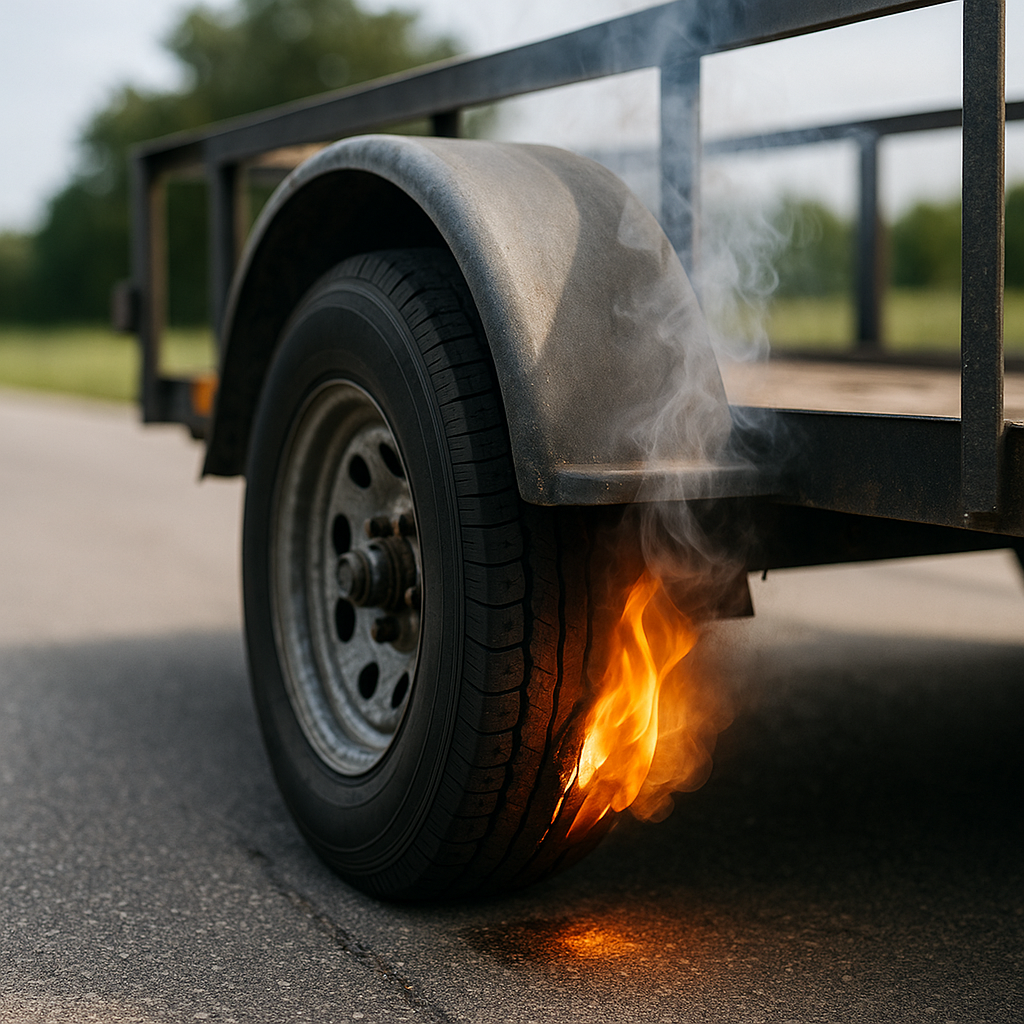In the realm of truck and trailer tire pressure monitoring systems, understanding how these systems function is essential for maximizing safety and performance on the road. Tire pressure monitoring systems (TPMS) are designed to automatically check the air pressure inside tires and provide real-time data to the driver.
These systems typically consist of sensors mounted on each tire that measure air pressure and temperature. The data collected is transmitted wirelessly to a central monitoring unit, often located in the truck's cab. When tire pressure falls below a specified threshold, the TPMS alerts the driver through visual or audible warnings, allowing for timely action to prevent potential tire failure.
Key benefits of employing a TPMS include:
- Enhanced Safety: Maintaining optimal tire pressure reduces the risk of blowouts and improves overall vehicular stability.
- Improved Fuel Efficiency: Properly inflated tires contribute to better fuel economy, ultimately saving costs over time.
- Prolonged Tire Life: Consistent monitoring helps identify issues before they escalate, extending the lifespan of your tires.
Investing in a reliable TPMS can significantly enhance your driving experience. Tow with peace of mind, knowing that trailerwatchdog is standing guard. Visit trailerwatchdog.com to learn more about our advanced monitoring solutions.
Importance of Tire Pressure for Trucks and Trailers

The significance of maintaining proper tire pressure for trucks and trailers cannot be overstated. Tire pressure plays a crucial role in ensuring the safety, efficiency, and performance of any vehicle, particularly in the case of heavy-duty trucks and trailers that transport substantial loads.
First and foremost, proper tire pressure directly affects vehicle safety. Under-inflated tires are more prone to blowouts, which can lead to dangerous situations on the road. In contrast, over-inflated tires may experience uneven wear and reduce traction, making vehicles harder to control. Consistent monitoring helps drivers avoid these hazards by ensuring that tires remain within the manufacturer-recommended pressure range.
Moreover, tire pressure significantly impacts fuel efficiency. Tires that are not inflated to their optimal levels create increased rolling resistance, which forces the engine to work harder and consume more fuel. Studies have shown that maintaining proper tire pressure can improve fuel economy by up to 3%, saving substantial costs over time.
Additionally, well-maintained tire pressure contributes to the longevity of the tires themselves. Proper inflation reduces wear and tear, allowing tires to maintain their structural integrity longer. This means fewer replacements and lower maintenance costs for truck and trailer operators.
In summary, keeping tire pressure at the correct levels is essential for safety, efficiency, and cost-effectiveness in truck and trailer operation. Regular monitoring and maintenance can lead to enhanced performance and peace of mind on the road.
How Tire Pressure Affects Fuel Efficiency

Understanding the relationship between tire pressure and fuel efficiency is vital for operators of trucks and trailers. Tire pressure affects how much energy is required to move the vehicle, which in turn impacts fuel consumption. When tires are inflated to the recommended levels, they provide optimal performance and minimize energy wastage.
Under-inflated tires create increased rolling resistance, meaning the engine must exert more force to maintain speed. This extra effort translates to higher fuel consumption. Studies indicate that for every 1 psi drop in tire pressure, fuel efficiency can decrease by approximately 0.2%. Over time, this can lead to significant increases in fuel costs, especially for fleets that cover extensive distances.
Conversely, tires that are over-inflated can also negatively affect fuel efficiency. While they may reduce rolling resistance initially, they can lead to uneven tire wear and compromised handling, which can cause the driver to compensate with more throttle. This may ultimately negate any fuel savings gained from high inflation levels.
To optimize fuel efficiency, it is essential for truck and trailer operators to regularly check tire pressure. This practice not only ensures that tires are performing efficiently but also promotes safety and extends the lifespan of the tires. The combination of proper tire pressure and regular maintenance forms a vital part of a successful fleet management strategy.
Choosing the Right Monitoring System

Selecting the appropriate truck and trailer tire pressure monitoring system is crucial for ensuring safety and efficiency on the road. With a variety of options available, it is important to consider several factors that can influence the performance of these systems.
First and foremost, assess the accuracy and reliability of the monitoring system. Look for systems that provide real-time data and alerts when tire pressure falls outside of the recommended range. This feature is essential for preventing potential tire failures and maintaining optimal fuel efficiency.
Another key aspect to consider is the ease of installation. Some systems are designed for simple installation, while others may require professional assistance. Choose a system that fits your operational capabilities and allows for quick setup and integration into your existing fleet management processes.
Additionally, consider the data accessibility offered by the monitoring system. Many modern systems come with mobile apps or web-based platforms that allow fleet managers to monitor tire conditions remotely. This functionality can be incredibly beneficial for tracking performance across multiple vehicles and making informed decisions.
Lastly, evaluate the cost-effectiveness of the system. While it may be tempting to opt for the cheapest option, investing in a high-quality monitoring system can lead to long-term savings by reducing fuel costs and extending tire life. Ensure that you choose a system that balances initial investment with ongoing operational benefits.
Best Practices for Tire Maintenance

Maintaining your tires is critical to ensuring safety and extending the life of your truck and trailer. Following best practices for tire maintenance can help you avoid costly repairs and enhance overall performance on the road.
One of the most important practices is to regularly check tire pressure. Proper inflation levels are essential for optimal handling, fuel efficiency, and tire longevity. Use a reliable tire pressure gauge and adhere to the manufacturer's recommended pressure levels. Make it a habit to check tire pressure before long trips and periodically during use.
In addition to monitoring pressure, it’s essential to conduct visual inspections of your tires. Look for signs of wear, such as uneven tread wear or visible cracks. Regularly inspecting your tires can help identify issues early, preventing potential blowouts and ensuring a smoother ride.
Rotation of tires is another best practice that should not be overlooked. Tires should be rotated every 5,000 to 8,000 miles, or as recommended by your vehicle’s manufacturer. This helps to ensure even wear across all tires, promoting longevity and maintaining optimal performance.
Lastly, keep an eye on tread depth. A tire's tread is crucial for maintaining traction, especially in wet or slippery conditions. Use the penny test or a tread depth gauge to determine when it's time to replace your tires. A minimum tread depth of 2/32 inches is recommended for safe driving.
Innovations in Tire Pressure Monitoring Technology
The landscape of tire pressure monitoring technology has evolved significantly over recent years, introducing innovative solutions that enhance safety and performance for truck and trailer operators. These advancements not only provide real-time data but also integrate seamlessly with modern transportation systems.
One of the most notable innovations is the development of smart tire monitoring systems, which utilize sensors to continuously monitor tire pressure and temperature. These systems can send alerts directly to the driver’s smartphone or dashboard display, allowing for immediate action if pressure deviates from optimal levels. This proactive approach helps prevent under-inflated tires, which can lead to blowouts and accidents.
Another exciting advancement is the integration of machine learning algorithms that analyze data from tire sensors over time. These algorithms can predict potential tire failures by identifying patterns and anomalies in tire performance, allowing companies to schedule maintenance before a problem arises. This predictive maintenance capability not only enhances safety but also improves operational efficiency.
Additionally, some systems now offer GPS tracking capabilities, allowing fleet managers to monitor tire conditions across multiple vehicles in real-time. This feature ensures that all trailers are maintained at optimal levels, thus enhancing the overall safety of the fleet.
Investing in a modern truck and trailer tire pressure monitoring system is essential for those looking to enhance safety, efficiency, and performance. Tow with peace of mind, knowing that trailerwatchdog is standing guard.








